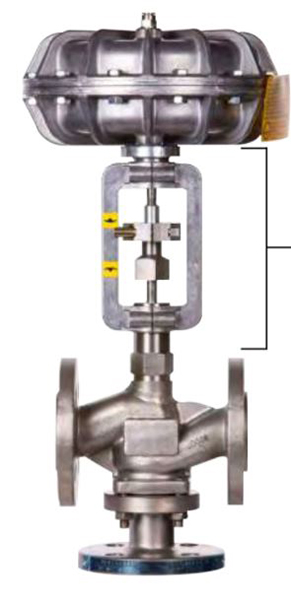3-Way Control Valves

In constant flow applications, the bi-directional ports of a 3-way control valve allow water to bypass the coil or load through mixing or diverting. An actuator is used to force an upward and downward movement of the valve’s plug which works to open and close off the different ports to redirect pressure and flow. Mixing applications have two inlets and one outlet, while diverting applications move water through one inlet and two outlets. The three-way valve is more cost effective control option for diverting or mixing applications than the use of multiple 2-way valves.
How It Works: 3-Way Valves
3 main components: Valve body, Actuator, Spindle and Plug
You can use pneumatic or electric actuation
Available in many different diameters (15mm – 300mm)
Different size actuators are available for different size valve bodies.
There are three points: A, B and AB
Ports are bidirectional
Tight seal leakage protection
These valves operate using an actuator which moves the valve plug up and down; this plug opens and closes the valve’s ports to help redirect the pressure and flow of the passing fluid.
As mentioned earlier, 3-way valves can be used solely for opening or closing a passage, or for modulating and precisely controlling the flow and temperature of the process. In comparison to 2-way valves are a most cost-effective choice for diverting and mixing applications.
3-Way Mixing Valves vs. 3-way Diverting Valves
Based on desired function, 3-way valves can be installed either as mixing or diverting valves. While a mixing valve has two inlets (A and B) and one outlet (AB), a diverting valve has one inlet (AB) and two outlets (A and B).
In diverting valves, the plug closes against the seat. Diverting valves should be used with low differential pressures and electric actuators rather than pneumatic. However, diverting valves can only be used in applications with low differential pressure, and can should be sued in with electric actuators- rather than pneumatic ones – as large drops in pressure may cause hammering of the plus. For these reasons, installing 3-way-valves as mixing valves is simpler and easier than installing them as diverting valves.